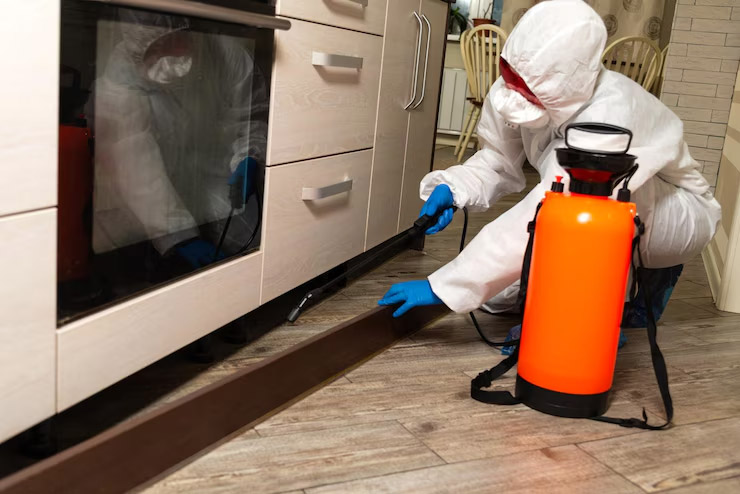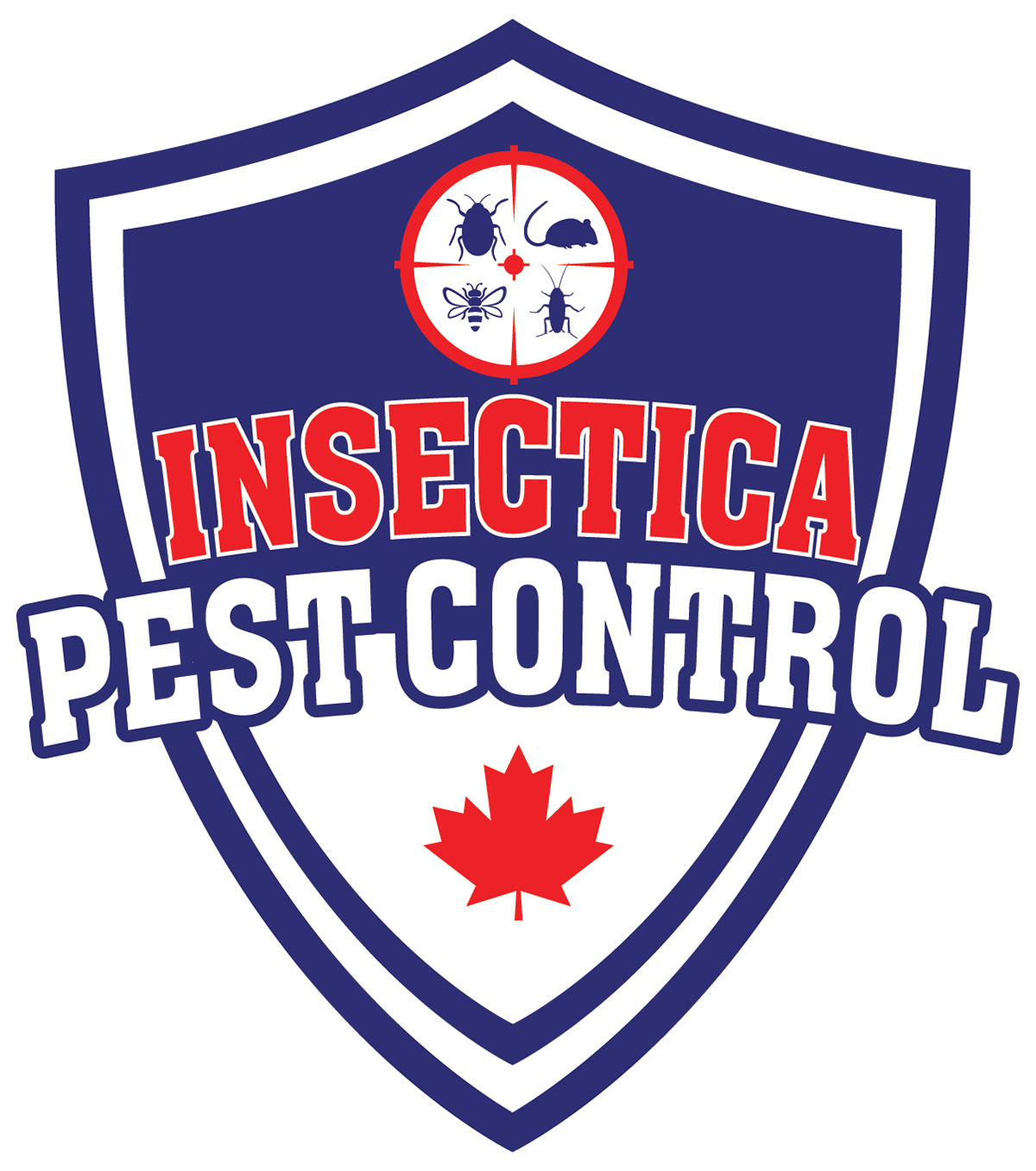Residential Pest Control Across Toronto

Pest Control For Your Home
Home is where the heart is – and where pests do not belong! We understand how important it is to keep your family safe and comfortable. That’s why we go above and beyond to make sure your home is free of uninvited guests. Whether it is ants in the kitchen or spiders in the basement, our goal is to solve your pest problems quickly and make you feel at ease.
Our expert team is here to help with:
- Whole-Home Inspection: We check every nook and cranny to find sneaky entry points and hidden infestations
- Creepy Crawlers Pest Control: We eliminate common household creepy crawlers, including cockroaches, spiders, beetles, silverfish, flies, and earwigs, using safe and effective methods.
- Bed Bug Treatment: Our thorough inspection and treatment solutions ensure that your home is free from these pesky, blood-sucking insects.
- Mice/Rat/Rodent Control: Mice, rats, and rodents will be removed and prevented from entering your home by sealing entry points and setting traps. Ongoing monitoring to keep your property rodent-free is a bonus!
- Tailored Treatment Plans: Customized solutions based on your home’s unique needs (because every house is different!)
- Family- and Pet-Friendly Products: We use treatments safe around kids and pets so you can relax worry-free
- Fast Relief and Prevention: Our techniques not only eliminate current pests but also keep them from coming back
- Flexible Scheduling: We work around your busy life – evenings and weekends are no problem
- Follow-Up Support: If pests return, we will too (no extra charge) to make sure you are completely happy within our promised period.
We know a pest-free home means peace of mind for you and your loved ones, and we are here to deliver just that.
Residential Pest Control FAQ for Toronto/Ontario
1) What pests are most common in GTA homes?
Typical invaders include mice/rats, ants (carpenter, pavement, Pharaoh), cockroaches, bed bugs, seasonal wasps/hornets, and nuisance flies (fruit, drain, cluster). Public guidance in Toronto emphasizes solving why pests are present—food, water, shelter—before applying products. That’s the core of Integrated Pest Management (IPM): prevention, monitoring, exclusion, and targeted control only where needed. (City of Toronto)
2) What exactly is “Integrated Pest Management” (IPM)?
IPM is a program that starts with correct identification, then removes conditions pests need (sanitation, sealing gaps, fixing moisture), uses monitoring to verify trends, and applies the least-hazardous effective control per label. It’s the approach endorsed by Toronto Public Health and municipal programs because it reduces risk to people, pets, and the environment while preventing rebounds. (City of Toronto)
3) Are treatments safe for kids and pets?
In Canada, legal pest products carry a Pest Control Products (PCP) number and are regulated by Health Canada’s PMRA. Safety depends on selecting the right product, following the label (placement, PPE, re-entry), and prioritizing targeted methods. Ask your provider to show the label and explain re-entry instructions for each space being treated.
4) What is a PCP number and why should I check it?
A PCP number confirms a product is registered in Canada and that you can access its official label. You (or your technician) can verify products and directions through Health Canada’s Pesticide Label Search. Using unregistered products or ignoring label directions is illegal and unsafe.
5) Do I need to leave my home during treatment?
It depends on the product label and method. Many modern indoor applications are localized with short re-entry times; heat or structural work can require longer absences. Your technician should follow the Canadian label and communicate any ventilation or re-entry requirements so you can plan accordingly.
6) How should I prepare before a pest service?
Preparation improves access and results: declutter, seal food, empty/clean bins, fix leaks/condensation, pull appliances, and open access to baseboards and utility penetrations. For bed bugs, launder/dry on high heat and bag clean items. Municipal guidance frames this as part of IPM: prevention and sanitation first, then targeted control. (City of Toronto)
7) What should I do after treatment?
Keep conditions unfriendly to pests: store food airtight, keep organics/recycling clean and lidded, dry out drains/condensation, and seal new gaps. Use monitors (sticky traps/interceptors) to verify decline. Always follow the product’s Canadian label for re-entry and cleanup steps after any application. (City of Toronto)
8) Are over-the-counter sprays or “bug bombs” a good idea?
Aerosols can kill visible insects but often miss the source (nests, eggs, voids) and may contaminate bait placements. If you use a product, it must have a PCP number, and the label’s indoor-use, ventilation and re-entry instructions must be followed exactly. The preferred path is IPM: remove sources + targeted controls as needed.
9) Who pays for pest control in rentals and condos?
In Ontario, landlords are responsible for keeping rentals in good repair and free of pests, while tenants must maintain ordinary cleanliness and cooperate with prep and access. Document issues and responses. If unresolved, contact the City (e.g., 311 Toronto) or the Landlord and Tenant Board for next steps. (Ontario)
10) How do I clean rodent droppings safely?
Don’t dry-sweep or vacuum. Wear gloves; mist droppings, nests and soiled areas with disinfectant (or 1:9 bleach solution), let it sit (≈5–10 minutes), then wipe and bag waste. Wash hands and contaminated clothes afterward. Federal and provincial guidance stress wet-cleaning to avoid aerosolizing particles. (Government of Canada)
11) What’s different about bed bug control?
Bed bugs hide in tight seams and can survive for weeks to months without feeding. Success requires thorough inspection and prep, heat and/or labelled insecticides, and follow-up visits to catch hatch-outs. Government guidance highlights physical controls (steam/heat, vacuuming), encasements, interceptors, and careful prevention when traveling or acquiring furniture. (Government of Canada)
12) Do you handle bees the same way as wasps/hornets?
No. Honey bee swarms are usually relocated by beekeepers. Paper wasps, yellowjackets and hornets near doors, play areas or eaves are typically removed/treated by licensed professionals. For City-owned trees, Toronto’s policy is to leave nests unless there’s a public-safety risk—call 311 for assessment. (City of Toronto)
13) Why do pests return after a “one-time” visit?
If food, moisture, and entry points persist, new pests can enter or hidden stages (eggs/larvae) can emerge. IPM programs combine exclusion (door sweeps, sealing), moisture repair, sanitation, monitoring, and targeted re-treatments when needed—an approach municipalities promote for durable results. (City of Toronto)
14) How often should a home have preventive service?
Think seasonal IPM rather than calendar spraying. Inspect and service when risk indicators rise (construction nearby, warm-weather spikes, fall rodent pressure). Toronto’s recent rat strategy also reinforces IPM—address sanitation and structural vulnerabilities first, then add targeted controls. (City of Toronto)
15) What does a professional inspection include?
A technician verifies species and sources, maps hotspots, checks structural gaps (doors, vents, utility lines), looks for moisture issues, and reviews sanitation/waste handling. Findings drive a written IPM plan with specific fixes and any targeted treatments. This preventive, evidence-based approach is the city-endorsed standard. (City of Toronto)
16) How long does it take to resolve an infestation?
Timelines depend on species and building complexity. Ant trails or minor mouse incursions can drop within days once entry/food are addressed; multi-unit cockroaches or bed bugs usually need several visits to reach zero due to life cycles and spread pathways. Monitoring confirms downward trends and final clearance. (City of Toronto)
17) What can I do today to prevent pests?
Seal exterior and interior gaps (door sweeps, utility penetrations), store food airtight, keep recycling/organics clean and lidded, fix leaks/condensation, keep vegetation off siding, and maintain clean, dry drains. These measures align with municipal IPM guidance and reduce both infestations and pesticide need. (City of Toronto)
18) Are there “green” or low-impact options?
Yes—IPM itself is the low-impact option. Start with exclusion, sanitation and monitoring; use precise, labelled products only where needed and only per the Canadian label. Health Canada’s PMRA framework and official label directions are designed to manage risk and ensure safe, effective use.
